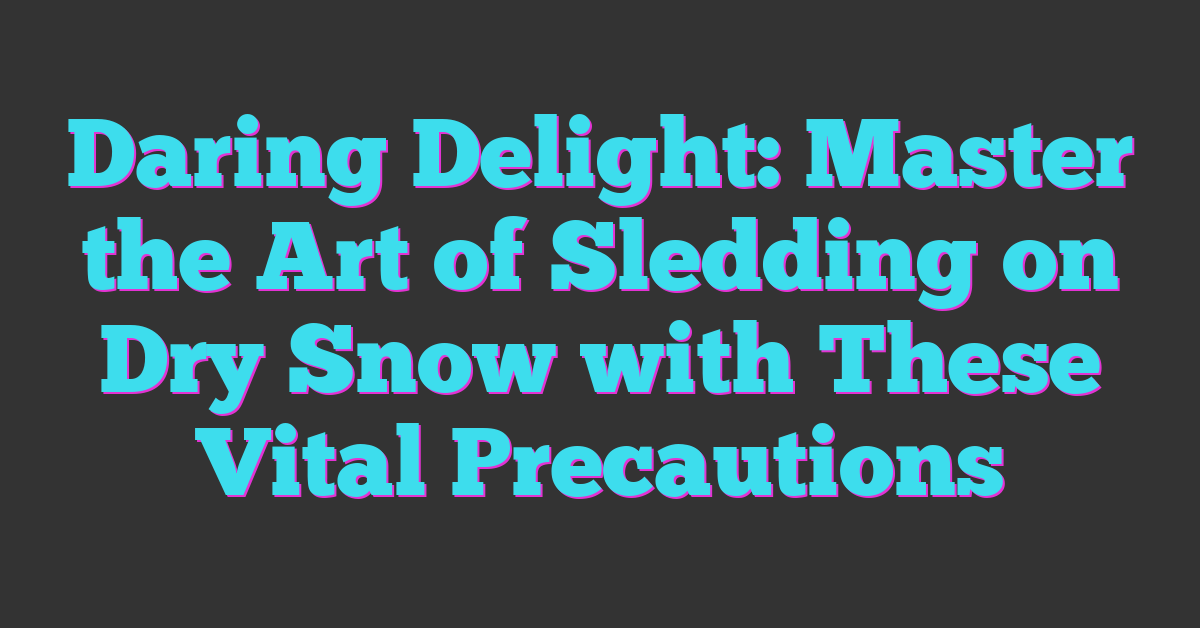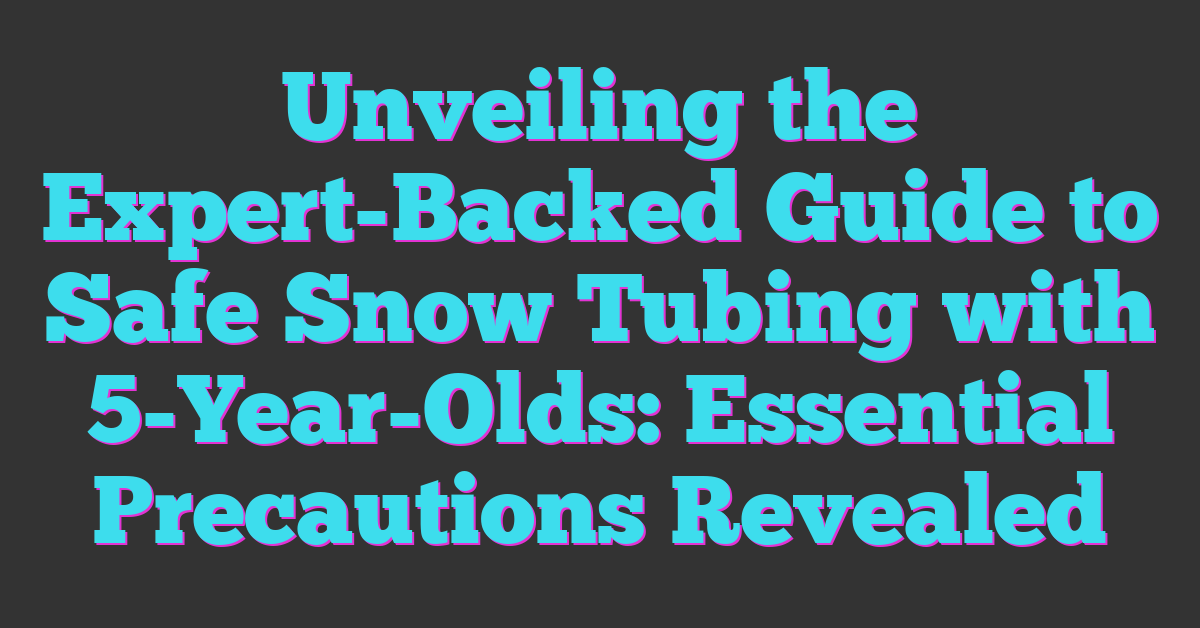When snow blankets the ground in fluffy, soft layers, not all sleds can handle the ride. If you’ve ever found yourself stuck or slowed down on powdery snow, you know how important it is to have the right sled. Choosing one designed for soft snow can make your winter adventures smoother and way more fun.

Whether you’re sledding with kids or looking to glide effortlessly down gentle hills, the right sled will keep you moving without getting bogged down. Let’s explore the best sleds that are built to float on soft snow and give you that perfect winter thrill.
Factors to Consider for Soft Snow Sleds
Choosing a sled suited for soft snow requires attention to specific features that maximize performance and fun. You want a sled that glides smoothly without sinking, handles turns easily, and stays durable through every run.
Material and Build Quality
Durability ranks high when selecting your sled. Look for tough materials like high-density polyethylene or reinforced plastic that resist cracking and abrasion on snowy terrain. These materials also reduce friction, helping your sled stay fast on powdery snow. Add a sturdy metal frame or steel runners if you expect tougher rides—these improve control and longevity without adding excessive weight.
Design and Shape for Soft Snow
Flat-bottom sleds distribute weight evenly, preventing you from sinking into soft snow. Wide bases increase surface area, aiding flotation over powder. Curved fronts provide lift to clear snow buildup while steering-friendly shapes, such as scooped tails or tapered edges, help you carve turns smoothly. Opt for designs with built-in handles or steering mechanisms to maintain better control on fluffy slopes.
Weight and Portability
You want a sled light enough to carry easily back up the hill but heavy enough to stay stable during descent. Most soft snow sleds weigh between 5 and 10 pounds, balancing portability with performance. Compact and foldable models enhance transport convenience without sacrificing ride quality—you can pack them with your winter gear and hit multiple runs without hassle.
Top Picks for Best Sleds for Soft Snow Conditions
You want a sled that glides smoothly over powdery, soft snow without sinking or slowing down. Choosing the right type helps you enjoy faster, longer rides and better control on those fluffy winter hills.
Inflatable Sleds
Inflatable sleds offer excellent flotation on soft snow because their wide, air-filled surface spreads your weight evenly. You get a cushioned ride with less chance of catching bumps that slow you down. Most models weigh between 2 and 4 pounds, making them easy to carry for long hikes or family adventures. Durable materials like PVC or reinforced vinyl resist punctures, but you should check for leaks regularly. Inflatable sleds come in various shapes, including circular tubes and flat decks, helping you pick one that suits your style and terrain.
Plastic Toboggans
Plastic toboggans shine in soft snow due to their broad, flat bottoms and rigid structure. You benefit from excellent stability and control on powder, especially on gentle to moderate slopes. Typically made from high-density polyethylene, these sleds balance durability with lightweight design, usually around 6 to 9 pounds. Their simple shape lets you steer by shifting your weight, making them a great choice if you want quick responsiveness without sacrificing flotation. Look for models with reinforced rims to avoid cracking on rough terrain.
Foam Sleds
Foam sleds provide superior shock absorption and buoyancy thanks to their thick, closed-cell foam design. This makes them perfect for soft snow where extra flotation prevents sinking. You’ll find them lightweight, generally 3 to 5 pounds, and easy to carry uphill. Foam sleds resist water absorption, so they stay light even after repeated use. Their soft texture cushions impacts well, reducing the risk of injury on bumpy runs. Many come with built-in handles for better grip and control during fast descents.
How to Choose the Right Sled for Your Needs
Picking the right sled means matching it to your specific snow adventures. Each factor plays a role in making sure you enjoy every ride down the hill.
Age and Skill Level
Consider who will use the sled most. Kids and beginners benefit from sleds with easy steering and stability, like plastic toboggans or foam sleds. Experienced riders might prefer inflatable sleds for faster speeds and responsive control. Make sure the sled’s design supports confidence and safety for your skill range.
Terrain and Snow Type
Match your sled to the snow conditions and the slopes you frequent. Soft, powdery snow works best with sleds that offer wide bases and excellent flotation, such as inflatable or foam sleds. If you encounter mixed snow with icy patches, a sled with sharpened edges or a reinforced bottom helps maintain control and speed on harder surfaces.
Budget Considerations
Your budget influences your choice but shouldn’t limit performance. Inflatable sleds generally cost more but provide comfort and floatation. Plastic toboggans give durability and stability at a moderate price, while foam sleds offer shock absorption and light weight affordably. Balance your spending against how often you sled and the conditions you face to find the best value.
Tips for Using Sleds in Soft Snow Safely
Maintain control by steering gently since soft snow slows turns and stops. Avoid steep slopes if you lack experience because softer snow increases the risk of tipping. Wear a helmet and proper winter gear to protect against falls and cold injuries. Choose sledding areas clear of obstacles like trees and rocks, especially in deep snow. Check your sled before every ride for cracks or damage to ensure structural integrity. Carry a whistle or phone for emergencies in remote spots. Always sled with a buddy or group so you have help if needed. Keep speed moderate since soft snow reduces sliding but can hide hidden bumps that cause sudden stops. When climbing back up, use established paths to prevent injuring yourself on uneven or unseen terrain. By following these tips, you’ll enjoy smooth, safe rides in powdery snow every time.
Conclusion
Choosing the right sled can make all the difference when you’re out enjoying soft snow. With the right gear, you’ll find it easier to glide smoothly and have more fun on every run. Remember to think about what suits your needs best, whether it’s ease of control, durability, or weight.
Don’t forget that safety always comes first. Taking a little extra time to prepare ensures your sledding adventures stay fun and injury-free. Now that you know what to look for, you’re ready to pick the perfect sled and make the most of those snowy days!










